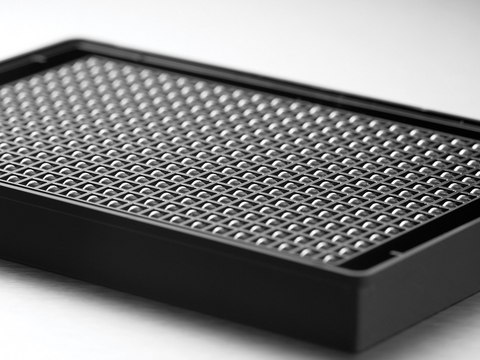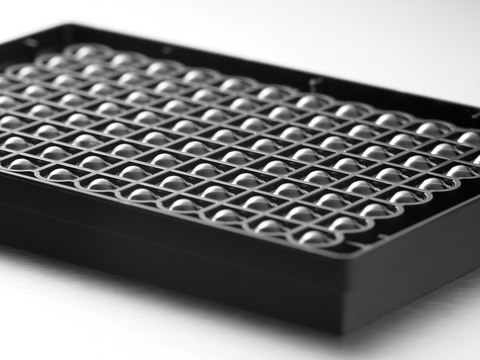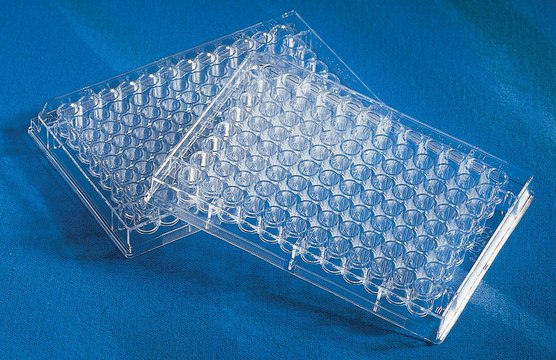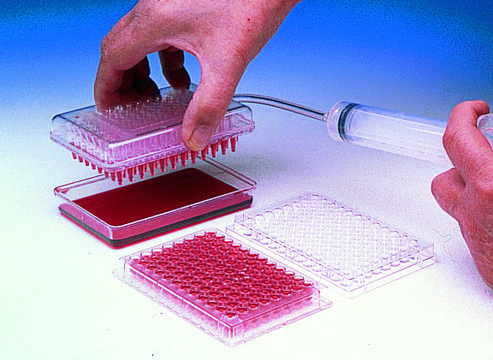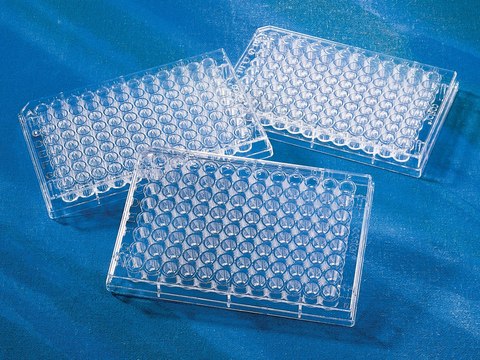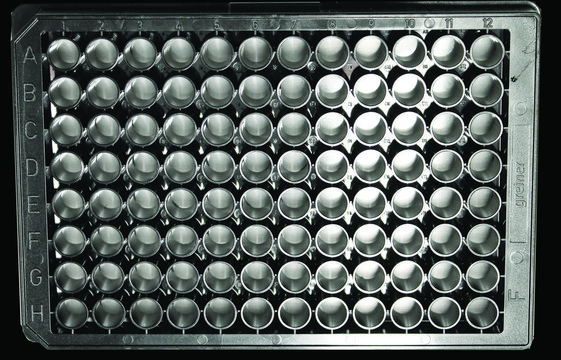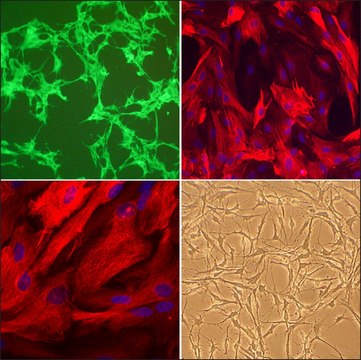HDP1096
Perfecta3D® hanging drop plate
size 96 wells , with lid and tray, polystyrene (untreated), sterile
Synonym(s):
3D, 3D Cell Culture
Sign Into View Organizational & Contract Pricing
All Photos(1)
About This Item
UNSPSC Code:
41100000
Recommended Products
material
polystyrene (untreated)
sterility
sterile
packaging
pack of 8 ea individually packaged
manufacturer/tradename
3D Biomatrix HDP1096-8
size
96 wells , with lid and tray
Looking for similar products? Visit Product Comparison Guide
General description
Perfecta3D® Hanging Drop Plates facilitate consistent and controllable formation of three-dimensional (3D) spheroids and cell aggregates.
Cells can be mixed prior to seeding in wells for homogeneous co-cultures, or added after spheroids are formed for patterned co-cultures. Stem cell aggregates like embryoid bodies can be cultured and studied without cellular contact with surfaces. Media can be changed easily.
One aggregate forms per well. The 96- and 384-well Perfecta3D® Hanging Drop Plates are compatible with automated liquid handling equipment. Drugs and assay reagents can be added directly to the wells. One spheroid per well and control over spheroid size means consistent data.
Cells can be mixed prior to seeding in wells for homogeneous co-cultures, or added after spheroids are formed for patterned co-cultures. Stem cell aggregates like embryoid bodies can be cultured and studied without cellular contact with surfaces. Media can be changed easily.
One aggregate forms per well. The 96- and 384-well Perfecta3D® Hanging Drop Plates are compatible with automated liquid handling equipment. Drugs and assay reagents can be added directly to the wells. One spheroid per well and control over spheroid size means consistent data.
- Easy to use
- One spheroid or aggregate per well
- Access cultures from the top of the plate: perform media changes, add compounds, or add cells for co-cultures
- Compatible with liquid handling systems, microplate readers, and manual pipetting
Legal Information
Perfecta3D is a registered trademark of 3D Biomatrix
Choose from one of the most recent versions:
Certificates of Analysis (COA)
Lot/Batch Number
It looks like we've run into a problem, but you can still download Certificates of Analysis from our Documents section.
If you need assistance, please contact Customer Support.
Already Own This Product?
Find documentation for the products that you have recently purchased in the Document Library.
Michele Minopoli et al.
Cancers, 13(13) (2021-07-03)
Myxoid liposarcoma (MLPS) is the second most common subtype of liposarcoma and has tendency to metastasize to soft tissues. To date, the mechanisms of invasion and metastasis of MLPS remain unclear, and new therapeutic strategies that improve patients' outcomes are
Our team of scientists has experience in all areas of research including Life Science, Material Science, Chemical Synthesis, Chromatography, Analytical and many others.
Contact Technical Service